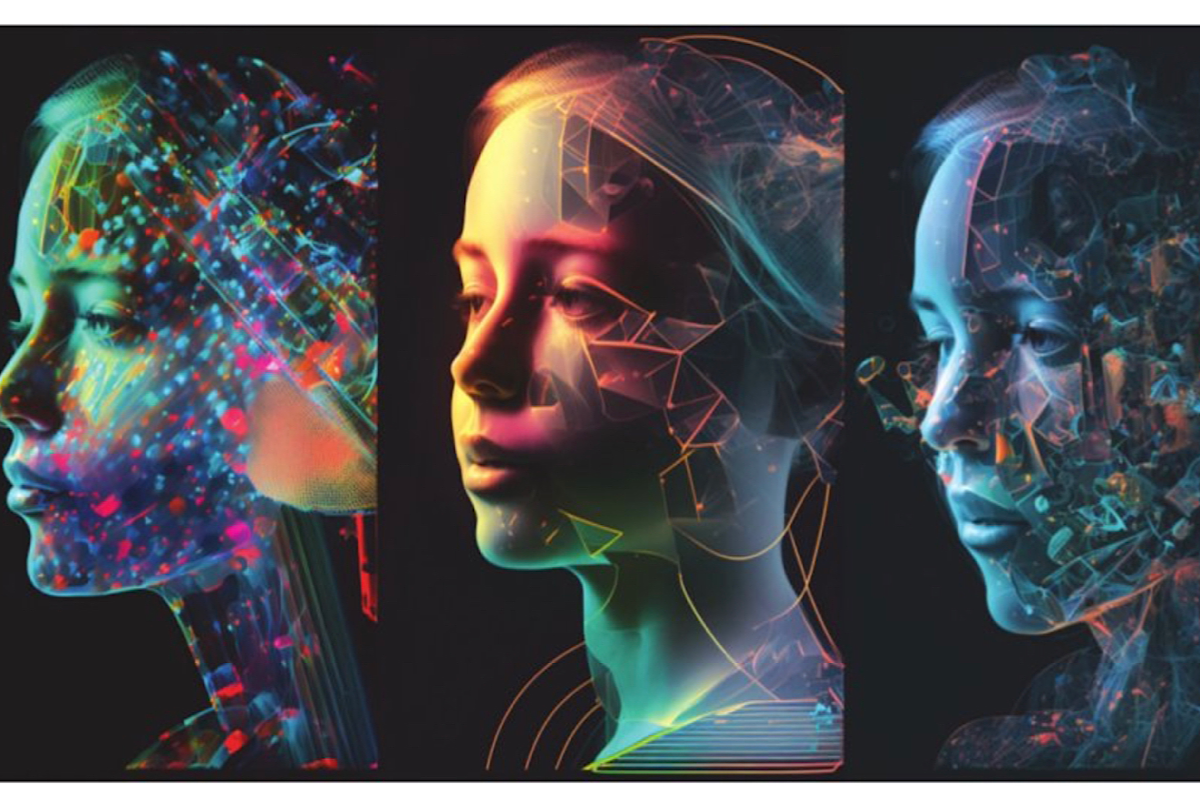Generative Artificial Intelligence mimicking human intelligence and eventually exceeding it has been a source of both awe and apprehension. The greatest potential of Generative AI lies not in replacing humans, as many fear, but in assisting us in our efforts to create hitherto unimaginable solutions. Generative AI, with its ability to forge new data from existing ones, has the potential to revolutionise various sectors.
From creating realistic images and videos to generating human-like text, the technology is pushing the boundaries of what is possible and augments human creativity and problem-solving capabilities. By analysing vast amounts of data and identifying patterns that humans might miss, Generative AI can provide insights that lead to ground-breaking solutions. For instance, in the field of healthcare, Generative AI can analyse patient data to predict disease patterns and suggest personalized treatment plans. Similarly, in the realm of climate science, it can help in predicting climate patterns and devising strategies to mitigate climate change.
Generative AI can augment human creativity by providing new perspectives and ideas. In the field of art and design, for instance, Generative AI can generate unique designs and artworks, providing artists with fresh inspiration. In the realm of music, it can create new melodies and rhythms, pushing the boundaries of musical creativity. However, the successful integration of Generative AI in our problem-solving and creative processes requires a shift in our perspective. Instead of viewing AI as a threat to human jobs and creativity, we need to see it as a tool that can enhance our capabilities. The economic potential benefits of General Artificial Intelligence (Gen AI) are vast and varied. Gen AI can automate routine tasks, freeing up human workers to focus on more complex and creative tasks. This could lead to significant increases in productivity.
By automating tasks, businesses can save on labour costs. Additionally, AI can help businesses make more efficient use of resources, further reducing costs. AI can enable the development of new products and services that were not previously possible. For example, AI is being used to develop self-driving cars and personalized learning tools. In terms of improved decision-making, AI can analyse large amounts of data to identify patterns and trends, helping businesses make more informed decisions.
The increased productivity and innovation driven by AI could lead to significant economic growth. As for the exact economic impact of Gen AI, it is difficult to say. However, according to a report by PricewaterhouseCoopers, AI could contribute up to $15.7 trillion to the global economy by 2030. This includes $6.6 trillion from increased productivity and $9.1 trillion from consumption-side effects. In the field of healthcare, for example, Generative AI has been used to develop new drugs and treatments.
For instance, Insilico Medicine, a biotechnology company, used Generative AI to design a new drug for pulmonary fibrosis in much shorter time, just two and a half years after beginning the project, a process that traditionally takes many years. The AI was trained on a vast amount of data about existing drugs and diseases, and it used this information to generate a completely new drug compound.
In the realm of art and design, Generative AI has been used to create unique artworks. A notable example is the portrait of Edmond de Belamy which was created by a Generative AI and sold at Christie’s auction house for $432,500. The AI was trained on a dataset of 15,000 portraits painted between the 14th and 20th centuries, and it used this data to generate a completely new portrait. In the field of music, OpenAI’s MuseNet is a Generative AI that can compose music in a variety of styles and genres. It was trained on a dataset of music from different genres and periods, and it can generate music that blends these different styles in innovative ways. Generative AI has been used to predict climate patterns and devise strategies to mitigate climate change. For instance, researchers at the Montreal Institute for Learning Algorithms have used Generative AI to create high-resolution climate change models. These models can help scientists better understand the impacts of climate change and develop effective mitigation strategies. But why are we afraid of Generative AI? The dystopian fear of Generative AI is a complex issue that is deeply rooted in societal and cultural perceptions of technology.
This fear is often fuelled by speculative fiction, movies, and media narratives that portray AI as a threat to humanity. The narrative typically revolves around the idea that as AI becomes more advanced and autonomous, it could potentially overpower humans, leading to a horrendous future. One of the primary fears is that Generative AI, with its ability to create new data and mimic human-like creativity, could outperform humans in various tasks, leading to widespread job displacement.
This fear is not entirely unfounded, as AI has already automated certain tasks traditionally performed by humans. However, it is important to note that while AI may replace certain jobs, it also has the potential to create new ones and free up humans to focus on more complex and creative tasks. Another dystopian fear is that AI could become uncontrollable. As Generative AI becomes more sophisticated, there is a concern that it could start making decisions that humans do not understand or agree with.
This fear is often linked to the concept of the ‘singularity’, a hypothetical point in the future when AI surpasses human intelligence. There is also a fear that AI could be used for malicious purposes. For instance, Generative AI could be used to create deepfakes, which are realistic but fake images or videos. These could be used to spread misinformation or propaganda, leading to societal unrest. What about automated war weapons?
The prospect of autonomous AI weapons of war is indeed a significant concern and a source of dystopian fear. These weapons, often referred to as lethal autonomous weapons systems (LAWS), are capable of selecting and engaging targets without human intervention.
The fear is that these weapons could potentially change the nature of warfare, making it more impersonal and deadly. One of the primary concerns is the ethical implications of delegating life-and-death decisions to Generative AI command and control. Critics argue that Generative AI lacks the human qualities of compassion and judgement, which are crucial in making ethical decisions in warfare.
There is a fear that autonomous weapons could potentially be used in ways that violate international humanitarian law. Another concern is the risk of escalation. With autonomous weapons, conflicts could potentially escalate rapidly, as AI weapons can react much faster than humans.
There is also a fear that these weapons could fall into the wrong hands, leading to increased instability and conflict. Moreover, there are technical concerns. AI systems can make mistakes, especially when operating in complex and unpredictable environments.
There is a fear that autonomous weapons could potentially cause unintended harm due to errors or malfunctions. These concerns have led to calls for a ban on lethal autonomous weapons. Many experts, including prominent figures in the AI community, have signed open letters calling for a preemptive ban on these weapons. They argue that the development of autonomous weapons could start a global arms race and that these weapons could be used in ways that are harmful to humanity.
While these fears are understandable, it is important to remember that AI is a tool created by humans. Its development and use are guided by human decisions. Therefore, the key to preventing a dystopian future lies in responsible and ethical AI development and use. This includes creating robust regulations, prioritising transparency and accountability in AI systems, and ensuring that AI is used to augment human capabilities and not replace them.
(The writer is the author of India In A New key: Nehru to Modi and is affiliated with the Diplomacy and International Program in the Graduate College at Norwich University, USA)












